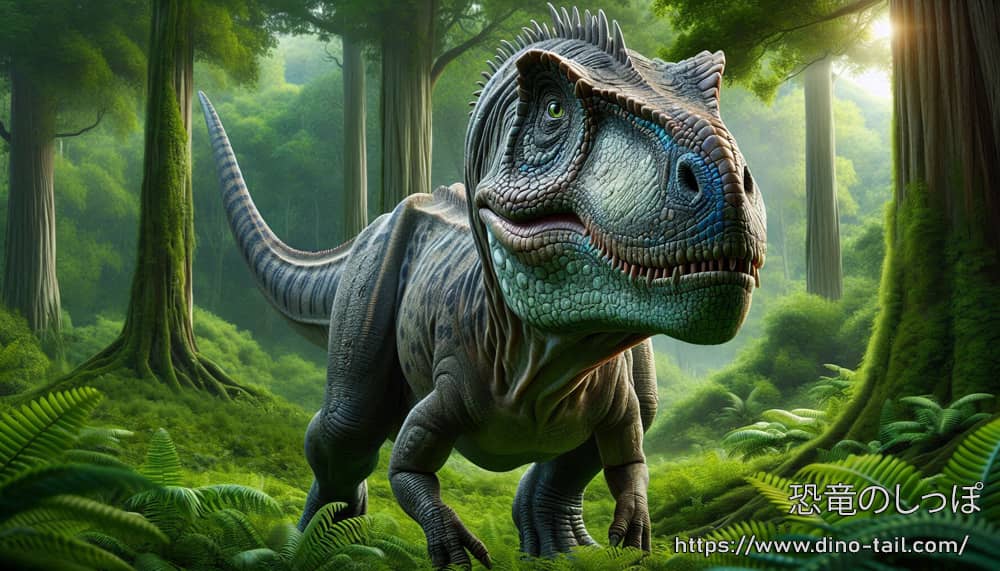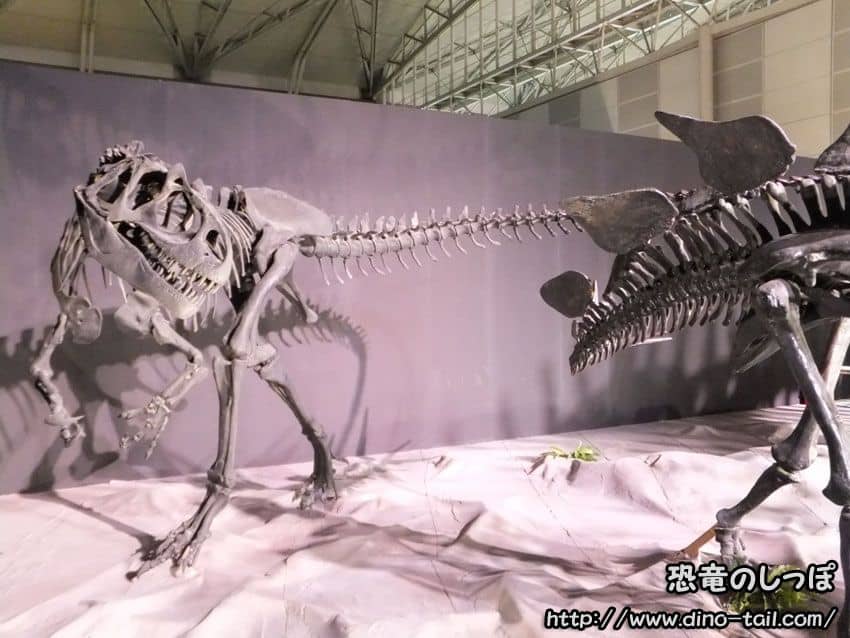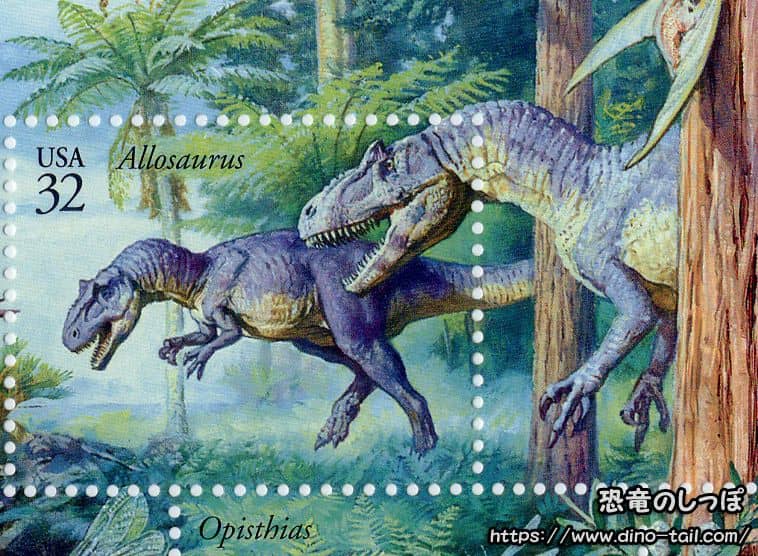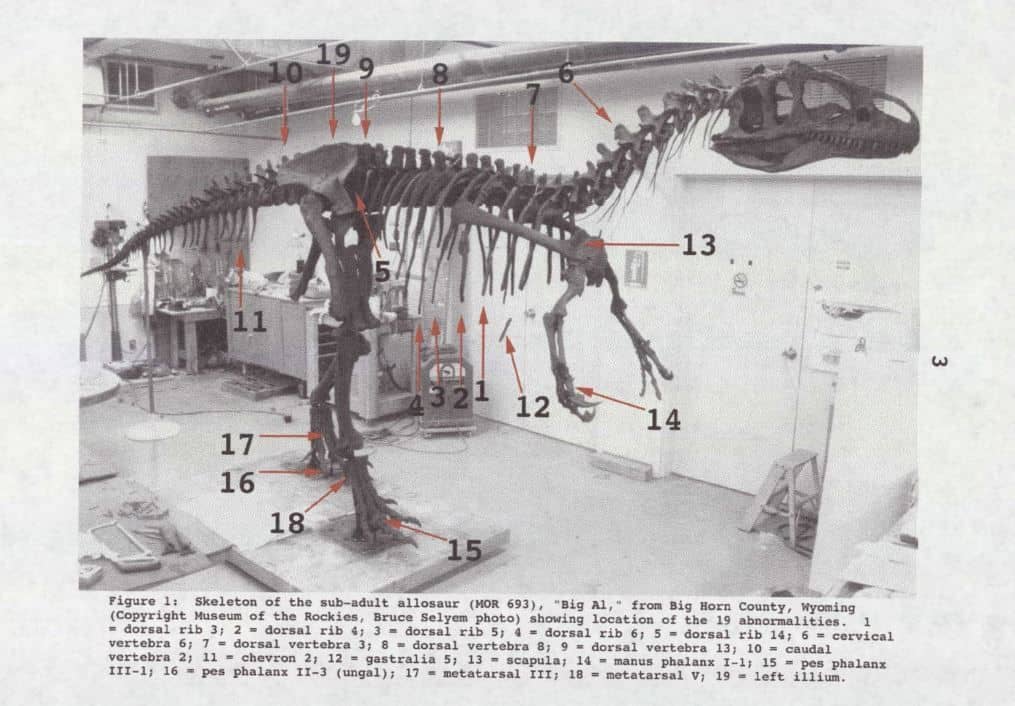About Allosaurus
| Scientific Name (Genus) | Allosaurus |
| Meaning of Name |
Different lizard
allos (different) [Greek] - saurus (lizard) [Greek] |
| Classification | Saurischia, Theropoda, Allosauridae |
| Total Length | Approx. 9-12m |
| Diet | Carnivorous |
| Period | Late Jurassic (approx. 155-145 million years ago) |
| Sub-classification/Species |
Allosaurus fragilis
Allosaurus europaeus Allosaurus jimmadseni Allosaurus tendagurensis |
| Year of Paper Publication | 1877 |
| Genus Name Publication | Marsh, Othniel Charles (1877). Notice of new dinosaurian reptiles from the Jurassic formation. American Journal of Science and Arts, 14, 514-516. |
The Apex Predator of the Jurassic
Allosaurus was one of the largest carnivorous dinosaurs of its time, living in North America and Europe during the Late Jurassic period. Weighing an estimated two tons, it reigned at the top of the terrestrial ecosystem. It is characterized by the triangular bony crests above its eyes, though the shape and size varied among individuals.

The Morrison Formation in the United States, where numerous Allosaurus fossils have been found, is thought to have been a savanna-like environment with distinct wet and dry seasons. In this environment, Allosaurus preyed on dinosaurs like Stegosaurus and young sauropods such as Diplodocus.
However, they were not the only large predators. Other large carnivorous dinosaurs, such as the more robustly built Torvosaurus and the distinctively horned Ceratosaurus, also inhabited the same time and place. It is believed these predators were able to coexist through "niche partitioning," avoiding direct competition by targeting different prey or preferring different habitats (e.g., forested areas versus open plains).
Thanks to the many fossils discovered, the growth process of Allosaurus is well understood. Its lifespan is estimated to have been between 22 and 28 years, with a growth spurt around age 15, and it was likely capable of reproduction by age 10.
The Allosauridae family also includes even larger relatives like Saurophaganax, indicating the richness of the Jurassic ecosystem.
Hunting Method - The Axe-Like "Hatchet Bite"
Analysis of the Allosaurus skull has revealed that its jaw strength was not as powerful as that of the later Tyrannosaurus. Therefore, it is thought to have hunted using a unique method rather than crushing the bones of its prey.

Comparing the skulls of Allosaurus and Tyrannosaurus, the difference is clear.
The Tyrannosaurus skull was broad and robust, with thick, conical teeth like "spikes" or "bludgeons" suited for crushing bone. In contrast, the Allosaurus skull was relatively long and slender, with thin, serrated teeth like steak knives. This morphological difference is directly linked to a functional one. Biomechanical studies suggest that the bite force of Allosaurus was surprisingly weak for its large size.
To explain the paradox of a weak bite force and preying on giant sauropods, the "hatchet bite" hunting method was proposed. This theory suggests that Allosaurus used its strong skull and powerful neck muscles to swing its open upper jaw down onto its prey like an axe, inflicting deep gashes. It is presumed that this attack was not intended to kill the prey instantly but to cause massive bleeding, weakening it before the final kill.
Finite Element Analysis (FEA), a computer simulation of structural strength, has shown that while the Allosaurus skull was weak in terms of bite force, it was extremely strong against vertical impacts. This "strong skull" is thought to have established Allosaurus as the apex predator of its time.

The role of its forelimbs is also crucial to understanding the hunting strategy of Allosaurus. Unlike the extremely small forelimbs of Tyrannosaurus, those of Allosaurus were relatively large and robust, equipped with three large, curved, sharp claws.
These claws are thought to have functioned as "hooks" to pierce and hold onto prey firmly. By restraining or pulling prey with its powerful forelimbs, Allosaurus could deliver its head strikes more accurately and effectively. This motion is similar to how modern birds of prey use their talons to grasp prey while using their beaks to deliver the final blow. By combining the slashing attack of its skull with the grappling function of its forelimbs, Allosaurus was able to take down prey much larger than itself.
It is known that the overlap of its visual fields was about 20 degrees. While visual overlap helps in judging distance to prey stereoscopically, it means Allosaurus did not have as good of stereoscopic vision as Tyrannosaurus. However, its depth perception was likely comparable to that of modern crocodiles, which would have been sufficient for hunting.
Due to its lighter weight, it is estimated to have been able to run at speeds of 30 km/h to 50 km/h, which was a significant weapon in its hunting arsenal. Its short forelimbs had three sharp claws, which are thought to have been useful for holding down or tearing apart prey.
Allosaurus's Social Behavior and Cannibalism
For a long time, it was believed that "Allosaurus hunted in cooperative packs." The fact that dozens of Allosaurus fossils are found together suggests they may have formed some kind of group. However, recent research suggests they may have competed fiercely with each other over prey, much like modern crocodiles. Supporting this, an Allosaurus fossil discovered in the Morrison Formation in 2020 showed bite marks with tooth shapes from the same species, as well as abdominal fractures, indicating violent struggles.

Drawing parallels with modern Komodo dragons or sharks, they may not have formed coordinated "packs" but rather engaged in "mobbing" or "feeding frenzies," where numerous individuals chaotically gather around a single prey item. In such situations, individuals are competitors rather than collaborators, and intense fighting and cannibalism are common. The fossil assemblages of Allosaurus found in groups may be the result of such competitive gatherings.
There is no definitive conclusion about the social behavior of Allosaurus. Solving this mystery will require the discovery and analysis of new fossils.
"Big Al": Evidence of a Harsh Life

Source: Laws, R. R. (1996). Paleopathological analysis of a sub-adult Allosaurus fragilis (MOR 693) ... Montana State University-Bozeman.
The famous fossil specimen "Big Al" is essential to telling the story of the harsh life of Allosaurus. Discovered in Wyoming, USA, in 1991, this individual was a remarkably well-preserved specimen with 95% of its skeleton intact.
Subsequent research revealed that Big Al had suffered numerous injuries, including fractures and infections. An infection in its right toe was particularly severe and is presumed to have made walking difficult.
Furthermore, in 1996, an even better-preserved specimen, "Big Al 2," was discovered, which showed signs of 19 injuries, including jaw and rib fractures and a tail infection. These specimens eloquently testify to how full of struggle the life of the Jurassic king was.
